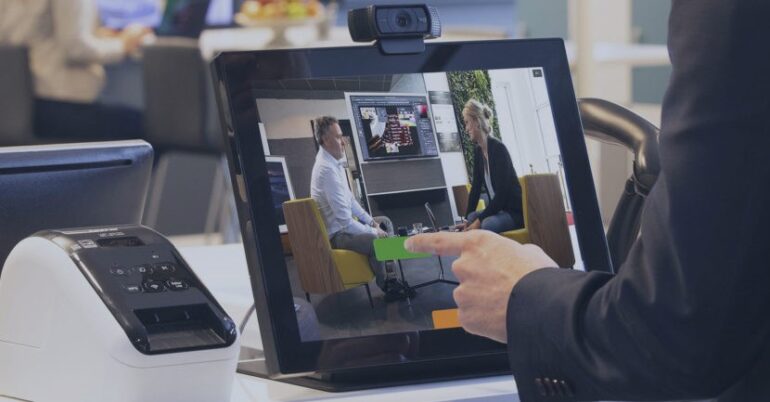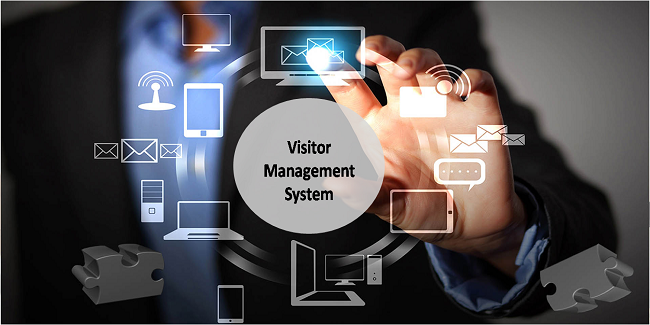In modern business operations, implementing robust visitor management software is imperative for organisations seeking to maintain security, streamline processes, and enhance visitor experiences. An integral component of such a system is the visitor management software, which serves as the digital backbone for managing guest access and interactions within a facility.
Choosing the right visitor management system is a crucial decision that needs consideration of various features and functionalities. This article explores the key features to consider when selecting visitor management software, offering insights to aid organisations in making decisions that align with their unique needs and objectives.
User-Friendly Interface

The interface is essential for ensuring visitor management software’s smooth and efficient operation. Intuitive navigation, clear instructions, and responsive design elements contribute to a positive user experience, enabling staff members to adapt to the system and efficiently perform tasks quickly.
Customisable settings and user preferences allow organisations to tailor the software to their requirements, maximising usability and productivity across different user roles and functions. Moreover, advanced features such as multilingual support and accessibility options ensure inclusivity and accommodate diverse user needs, further enhancing the user experience and promoting widespread software adoption within the organisation.
Visitor Registration and Check-In Process
Efficient visitor registration and check-in processes are fundamental to any visitor management software. The software should offer seamless registration options, allowing visitors to pre-register online or self-register upon arrival using kiosks or mobile devices. Integration with identification systems enables quick and accurate verification of visitor identities, while automated check-in procedures minimise wait times and enhance the overall visitor experience.
Furthermore, the software should facilitate real-time notifications to hosts upon visitor arrival, ensuring prompt reception and acknowledgement. Customisable registration forms and check-in workflows also enable organisations to collect specific information from visitors and tailor the check-in process to their unique needs, enhancing efficiency and data accuracy.
Access Control and Security Features

Security is a primary concern for organisations implementing visitor management software, necessitating robust access control and security features. The software should support customisable access permissions, allowing organisations to define and enforce access levels based on visitor types, timeframes, and access areas.
Integration with access control systems enables seamless synchronisation of visitor data with physical security measures, such as turnstiles, gates, and access cards. Additionally, advanced security features such as biometric authentication, facial recognition, and watchlist screening enhance the ability to detect and prevent unauthorised access or security breaches.
Moreover, audit trail capabilities and real-time alerts empower organisations to promptly monitor and respond to security incidents, enhancing overall situational awareness and risk mitigation efforts.
Data Management and Reporting Capabilities
Effective data management and reporting capabilities are vital for enterprises to leverage the full potential of their visitor management software. The software should provide comprehensive data capture and storage functionalities, enabling organisations to maintain accurate records of visitor activities, including check-in/out times, purpose of visit, and host information.
Customisable reporting tools allow organisations to generate insightful analytics and metrics, helping them identify trends, assess visitor traffic patterns, and make informed decisions to optimise resource allocation and operational efficiency.
Moreover, integration with business intelligence tools enables organisations to visualise and analyse visitor data in real-time, facilitating data-driven decision-making and strategic planning efforts. Additionally, compliance with data privacy regulations and industry standards ensures the secure handling and storage of visitor information, safeguarding sensitive data and maintaining regulatory compliance.
Integration and Compatibility

Integration and compatibility are key considerations when selecting visitor management software, particularly for organisations with existing IT infrastructure and software systems. The software should support seamless integration with other business applications, such as CRM systems, email platforms, and security management software, to facilitate data sharing and workflow automation.
Compatibility with various hardware devices, such as printers, scanners, and mobile devices, ensures flexibility and scalability in deployment, allowing organisations to adapt and expand their visitor management capabilities as needed. Additionally, support for industry-standard protocols and APIs enables organisations to integrate the software with third-party systems and services, facilitating interoperability and data exchange across different platforms.
Moreover, cloud-based deployment options and software-as-a-service (SaaS) models offer scalability and accessibility, enabling organisations to deploy and manage the software efficiently across multiple locations and devices.
Conclusion
In conclusion, selecting a visitor management system is critical for organisations seeking to enhance security, streamline operations, and elevate visitor experiences. By carefully considering key features such as a user-friendly interface, visitor registration and check-in processes, access control and security features, data management and reporting capabilities, and integration and compatibility, organisations can choose a software solution that aligns with their needs and objectives.
A well-chosen visitor management software improves operational efficiency and security and contributes to a positive brand image and visitor satisfaction. As organisations prioritise security and efficiency in their visitor management processes, investing in the right software solution becomes increasingly essential for achieving long-term success and resilience.
